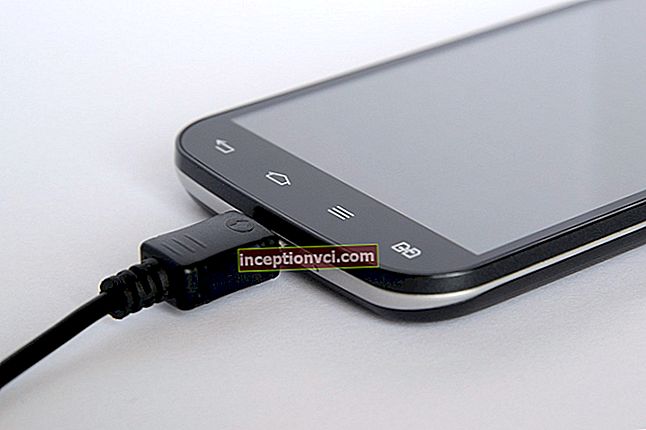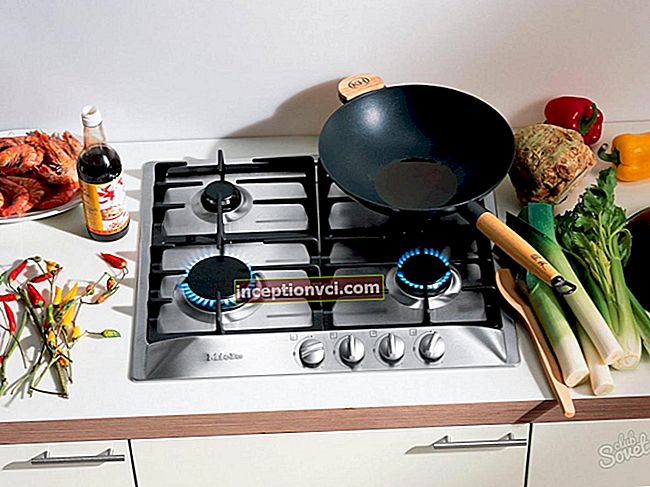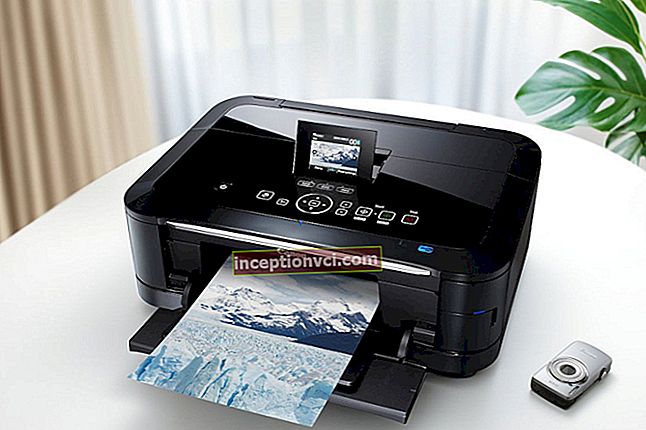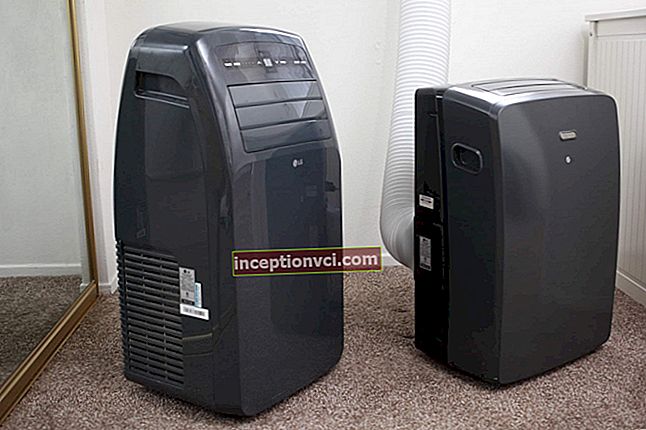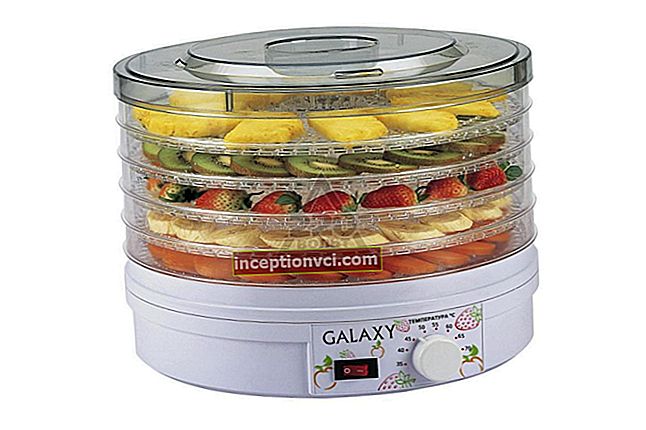Sony A580 is the successor of the Sony line (after Sony A560). In relation to its predecessors, the camera we are considering has acquired a new matrix with a higher resolution (here it is 16 megapixels, compared to 14 megapixels of the same Sony A560), the model also received new sensors with a higher resolution and a new autofocus mode. These cameras (Sony A560 and A580) also had ISO 100, while the A550 and A500 did not. Although generally speaking, this camera (Sony A580) largely inherits the previous ones.
Reading the advertising materials and technical specifications made me think that the A580 is a very interesting proposal for amateur photography, the authors of which are looking for equipment that has the ability to manually adjust many parameters and guarantees many interesting solutions. An important advantage of the A580 is its fast Live View AF, which we are already familiar with from previous Alpha models. This is what sets the A580 apart from similar devices from other manufacturers and may attract those users who prefer to use the Live View mode. The functionality of the view mode complements the rotary screen.
But all this is not so new, and you can think about how this device can compete with products from other manufacturers? For most camera users, the main criterion, of course, is the quality of the pictures. Let's see further whether this camera justifies the costs and what quality of images it will give us.




Main characteristics of the camera:
Manufacturer: Sony
Model: Alpha DSLR-A580
Date of appearance: June 24, 2010
Number of Pixels: 16 Megapixels
Available Permissions:
• 4912x3264 (RAW, JPEG)
• 3568x2368 (JPEG)
• 2448x1624 (JPEG)
• 4912x2760 (JPEG, 16: 9)
• 3568x2000 (JPEG, 16: 9)
• 2448x1376 (JPEG, 16: 9)
• shooting a panorama
Matrix size: 23.5x15.6 mm (APS-C), Exmor APS HD CMOS, 3: 2, total number of pixels: 16.7 Mpix.
Self-cleaning mechanism of the matrix.
Image processor: BIONZ
Image recording formats: JPEG (EXIF 2.3, DPOF, DCF 2.0, Basic MPF), RAW files (ARW 2.2.), RAW + JPEG
Types: JPEG Fine / Standard
Video: MP4 / AVCHD (MPEG4 AVC / H.264)
Sound: Dolby Digital (AC-3) / MPEG-4 AAC-LC
ISO characteristics: Auto
ISO range 100-12800 in 1 EV steps. Noise reduction using a series of images combined into one.
Shutter: electronically controlled, vertical travel
30 sec - 1/4000 sec in 1/3 EV steps, Bulb
Lens construction: with Sony Alpha bagnet (Minolta A)
Optical Zoom: Lens dependent
Digital zoom: lens dependent
Image stabilization: yes
Video recording:
• 1920 x 1080 pixels (Full HD, 50i interlaced), AVCHD, 17Mbit / S
• 1440 x 1080 pixels (HD), MP4, 12 Mbps, 25 fps
• 640 x 1080 pixels (VGA), MP4, 3 Mbps, 25 fps
Built-in stereo microphone
Optional external stereo microphone ECM-ALST1 or ECM-CG50.
Focus: Viewfinder
TTL with phase detection,
15-point AF (3 cross-sensors)
AF fields: Matrix (automatic selection from 15 AF points), spot metering (center), local (manual selection from 15 AF points).
Live picture mode
Face and smile detection
Autofocus Modes: Single AF-S, AF-Auto, Continuous AF-C, MF
Focus on approaching eyes (on / off)
AF illuminator: Built-in flash (up to 5m)
Light metering in the viewfinder
TTL metering of photodiode 40-segment silicon in honeycomb
Detection range 2 to 20 EV 4 EV to 20 EV with Spot (ISO 100, f / 1.4 lens)
Live: 1200
Detection range 1 to 17 EV (ISO 100, f / 1.4 lens)
Measurement modes:
- estimated
- points
- center-weighted
White balance: auto, daylight, shade, cloudy, bulbs, fluorescent, flash.
Compensation: Exposure Compensation: +/- 2.0 EV in 1/3 EV steps
Bracketing: 3 frames in 1/3 or 2/3 EV steps
Auto HDR (High Dynamic Range)
Modes: Auto, Auto and Flash Off, Program (P), Shutter Priority (S), Aperture Priority (A), Manual (M) Sweep Panorama (2D, 3D)
Scene Modes (SCN): Portrait, Landscape, Macro, Sports, Sunset, Night Scene, Night Portrait, Manual, Twilight
Shooting speed in continuous mode up to 5 frames per second,
In speed priority mode up to 7 fps
Live View at 3 frames per second
max. 22 RAW images or 20 RAW + JPEG images JPEG or 44 (L, high quality)
Flash Type Pop-up ADI TTL, Guide Number 12 (ISO 100)
Synchronization with 1 / 160s (stabilization Off / Off)
Exposure Compensation +/- 2 EV in 1/3 EV steps
Charging time: about 4 seconds
Modes: auto, red-eye, fill flash, slow sync shutter sync on second curtain shutter HSS, wireless (with external flash)
Hot shoe connector: Yes
There is a tripod socket
Self-timer: 2s or 10s
Memory card slot:
• Memory Stick Duo, PRO Duo, PRO-HG Duo
• Secure Digital (SD / SDHC / SDXC)
Swivel LCD, 3-inch color Xtra Fine LCD, 921,600 dots
Adjustable display brightness
Live View - digital live view
Viewfinder mirrors, magnification x0.80, coverage: 95%, diopter adjustment: -2.5 to 1.0, eye points: 19 mm (from the eyepiece lens) Spherical Acute Matte focusing screen
Connectors: USB 2.0 Hi-Speed USB (PTP, MINIB), HDMI type C, power input, external connector: microphone input, remote control
Remote control: RMT-DSLR wireless remote control
Optional remote control: RM-S1AM
Power: Li-ion battery NP-FM500H (7.2 V, 1650 mAh, capacity up to 1050 photos - according to CIPA)
Optional AC adapter: AC-PW10AM
Optional Vertical Grip / Battery (Clutch): VG-B50AM
NP-FM500H battery, charger, strap, USB cable, viewfinder cap, lens cap, drivers, user manual, software
Weight 599 g (without battery and memory card)
approx.679 g (with battery and memory card)
Dimensions 137 x 104 x 84 mm
Further information: Supported color spaces: sRGB, Adobe RGB
D-Range Optimizer (DRO)
Russian menu.
Structure, product quality, functionality

In terms of appearance, the Sony Alpha 580 looks virtually the same as previous models from the same manufacturer. Although some minor differences have appeared: slightly different buttons and colors. But if we talk about size and weight, then these parameters are virtually identical. But this is for the best, the dimensions of the device and its weight are optimal.
The build quality of the A580 makes a good impression. The body of this Sonya is made mainly of black plastic, the sides of the camera (including the handle) are lined with black rubber, which makes it more comfortable to hold. In addition, on the back panel, where the thumb rests, there is also a rubber insert. The body parts fit well, the whole structure looks solid.
Power and connectors
The Sony Alpha 580 is powered by an NP-FM500H "InfoLITHIUM" Li-ion battery, 1650mAh, 7.2V.
In tests, the battery shows an average performance of around 1200 photos.
In shooting mode, battery information is displayed on the screen as a percentage, which allows you to precisely control the duration of the shooting.
Charging the battery with the BC-VM10 charger and at room temperature takes about 175 minutes.
The camera can also be operated with the optional AC-PW10AM AC adapter. The DC jack is located on the right side of the camera and is covered with a small rubber cap.
Alpha 580 can handle two types of memory cards:
* Memory Stick PRO Duo or PRO-HG Duo
* SD / SDHC / SDXC.
Slots for both types of cards are located on the right side of the camera under a plastic flap. There is also a switch to select the type of memory card you are using.


In the Sony Alpha 580, outside of the aforementioned DC IN power connectors, we find USB 2.0 Hi-Speed, which allows the device to communicate with a computer or printer, type C HDMI connector and S1AM RM or RM-L1AM (not included).
Due to the video recording capabilities of the New Sony DSLR, it also has an external microphone input. It is also worth noting that the device allows remote control via the RMT-DSLR1 remote control, which must be purchased separately.



The Sony A580 allows you to connect an optional VG-B50AM Grip, with which, in addition to the obvious increase in comfort when shooting vertically, you can also use two NP-FM500Hs.
Buttons
Let's now discuss the buttons and knobs that are found on the body of the A580. Let's start at the top.

On the left we find a choice of modes for the camera. It contains the following items:
* Automatic
* P - semi-automatic mode,
* A - Aperture priority,
* S - shutter speed priority,
* M - manual mode,
* Panorama mode,
* SCN - scene (portrait, sports, macro, landscape, sunset, handheld night shooting at twilight, night portrait),
* No flash.
The flash switch is located between Live Viewfinder and mode selection. Moving forward, we find a Live View button in the center that invokes the live view of the control field (live preview with the main matrix). Below it is D-Range, which provides quick access to options related to the tonal range enhancement and HDR. To the right and just above this button, we find a selection of the release mode (continuous shooting, timer, exposure bracketing, white balance bracketing, remote control), and next to it is a button for quick access to ISO settings.
In the upper part of the camera there is also a switch. In the upper part of the handle (below the switch), we find the control knob, which serves, in particular, to change the exposure time and aperture. You can also use it to change parameters in the function menu. Now let's take a look at the back of the camera.

There are two buttons on the left side of the viewfinder. The first opens the camera menu, and the second, labeled DISP, is used to change the display mode of information on the monitor screen. On the right side, the viewfinder has a small diopter adjustment lever. The video recording button and exposure compensation, which in playback mode is used to reduce the inclusion of photos and thumbnails, are nearby.
In the upper right corner we see the AEL AE-lock button, which, when using Live View, is also used to enlarge the selected part of the frame in manual focus mode. In playback mode, it enlarges the displayed image. Going down, we find a menu of key functions Fn (in playback mode, it serves to rotate the image), below there is a ring controller, which is used, in particular, to navigate the menu, view photos, or select options. In local AF mode, the controller can select one of 15 AF points. In the middle of the controller is the AF button. First, it serves to validate the choices made in the setup menu. Secondly, it is used to stop at the point selected by the autofocus. There are two more buttons next to it. The first is used to switch the camera to playback mode, and the other to delete photos.


On the front of the body, on the left side, next to the lens mount, we find a focus mode switch from automatic to manual or vice versa. Above we find the button for raising the built-in flash. On the other hand, at the bottom, we find the depth-of-field preview button.
Menu
In the Sony Alpha DSLR 580, we find a typical menu for this manufacturer. It consists of 6 groups of tabs arranged horizontally, and each of the tabs contains enough items to fit vertically on the screen. Groups include: recording menu (3 tabs), custom menu (2 tabs), playback menu (2 tabs), menu selection (bookmarks), clock setting menu (1 tab), and setup menu (2 tabs). Here we will list all the items in each tab.
Recording menu:
* Image size: L [16 Mpix] M [8.4 Mpix], S [4.0 Mpix]
* Picture format - two formats: 3: 2 or 16: 9,
* Photo quality - Selectable RAW, RAW + JPEG recording, JPEG (high quality), JPEG (standard quality)
* Video format: AVCHD, MP4,
* Video size: 1920 x 1080 pixels for AVCHD, 1440 x 1080 pixels or 640 x 480 pixels for MP4
* Record audio while recording video
* Steady Shot - image stabilization
* Panorama (size): Standard (3872 x 2160 pixels vertical, 8192 x 1856 pixels horizontal), Wide (5536 x 2160 pixels vertical, 12416 x 1856 pixels horizontal)
* Panorama (direction): left, right, up, down
* 3D Panorama (Size): 16: 9 (1920 × 1080 pixels horizontal), Standard (4912 × 1080 pixels horizontal), Wide (7152 × 1080 pixels horizontal)
* 3D Panorama (Direction): Left, Right
* Adjustable Flash (Flash ADI, Pre-flash TTL)
* AF illuminator
* Color space: sRGB or Adobe RGB,
* Reducing noise with long exposures
* Noise level at high sensitivity.
Own setup menu:
* Eye-Start AF - autofocus when using the viewfinder
* AEL button function in Live View mode from control field: Exposure lock or magnification
* AEL button
* Focus lock button settings,
* Red eye removal
* The LCD screen will automatically turn off after bringing your eyes closer to the viewfinder,
* Display of grid lines of installations
* Bar graph,
* Adjust preview time
View menu:
* Delete
* Play image or video
* Slide show
* Image index
* 3D viewing (with suitable 3D TV)
* Image protection
* Print settings
* Setting the volume when playing a movie
* Choice of catalog
* Date picker
* Automatic image rotation.
Map menu:
* Formatting
* File number
* Directory name
* Choice of recording directory
* New catalog
* Image recovery
* The amount of memory remaining on the card
Clock:
* Date and time setting
* Location of settings.
Setting menu:
* LCD,
* Power saving mode, L.V.
* Power saving in viewfinder mode
* HDMI control
* Language
* Help screen
* USB connection
* Transfer settings using an Eye-Fi card (appears when an Eye-Fi card (sold separately) is inserted into the camera)
* Sound signals
* Matrix cleaning
* Pixel display
* Version
* Demo mode
* Default settings.
The Fn button opens a menu of functions, allowing you to quickly change many parameters. For example, items such as:
* Scene selection (SCN mode)
* Easy selection of 3D panorama (panorama mode)
* Release mode (burst, timer, etc.)
* Shooting mode
* Auto focus mode
* Face recognition function
* Smile recognition function
* ISO sensitivity
* Light measurement mode
* Flash Correction
* White balance
* D-R + / HDR
* Creative zones
Display
The Sony Alpha 580 has a 3-inch TFT display with a resolution of 921600 dots. The screen can be tilted up or down 90 degrees. The image on the screen is bright, high-contrast. In addition, you can adjust the brightness of the display on a 5-point scale.

In the viewfinder mode, the LCD screen is used to display information about the current shooting settings. You can choose one of two options, or completely refuse to display information, and use DISP to switch between each option. In the graphical display of the main body, a diagram and icons are displayed to illustrate the changes in exposure time and aperture. In the preview of the options, the screen gives more information, which is clearly displayed in the table. When the eyes move closer to the viewfinder, the installed sensor automatically turns off the shooting settings screen.
While the camera is in Live View mode, pressing DISP is used to toggle between three kinds of on-screen display options.

In the simple version, in addition to the current frame, we see a picture of AF points, and at the bottom of the screen a black frame with the current exposure time, aperture, exposure compensation scale and camera shake indicator. The other two options provide information about exposure and camera settings.
In the setup menu, you can also find options for displaying histograms and grid lines (three views) on the screen. The latter appears only in auto mode, and a live view preview of the focus mode control.
The Live View mode in the A580 is very functional. Its main asset is set based on phase-detection autofocus, making it as fast as in viewfinder mode. In addition to the advantages, there is a tilting screen and transparent information on the screen. It should be noted, however, that there is one drawback to the main Live View mode. The photo viewed on the monitor does not include the entire frame, which will ultimately be an image and gives a field of view of only 90%.
The Fn button in Live View has the same functions as in the viewfinder and displays menu functions.It is also worth saying a few words about the Live View sharpness control mode, which works by pressing the FOCUS CHECK LV button. Its use enhances the mirror and the LCD monitor displays images from the matrix itself. This allows for improved image quality and, moreover, allows for 100% coverage. FOCUS CHECK LV can automatically sharpen, and this process can be done in two ways. Choice of AF based on phase detection (the mirror goes down at the moment of focusing and the image disappears from the screen) or AF based on contrast detection (autofocus takes longer, but the image remains visible on the screen). The desired option is set in the shooting menu. When using clarity control LV, we can zoom in 7x or 15x on a selected part of the image to carefully check if the subject is in focus or, conversely, fine-tune the focus manually.

In view mode, there are three display options. In addition to the photo, you can also view basic information about it. The third option is the photo thumbnails displayed along with the EXIF summary and yellow-red-green-blue histogram.

Images can also be enlarged and looked like thumbnails (index 12 photos).

It's a shame the A580 doesn't use a monochrome LCD panel in the upper body. Such a solution could improve the user experience by allowing them to quickly view and change relevant shooting parameters without using the main display. Interestingly, if we reorganize the button allocation a bit, it would be easy to save some space on the top of the case for such a display on the A580.
Viewfinder
The A580 uses a 95 percent viewfinder mirror field and 0.8x magnification (up to 50mm).
The amount of information displayed in the A580's viewfinder is small, as you can see by looking at the diagram below. The brightness of the image in the viewfinder is satisfactory, but it could have been slightly higher.
Operation and ergonomics

The Sony Alpha 580 has the same dimensions as the older A550, and in terms of overall usability, both cameras are very similar. The size of the handle of the A580, as for amateur SLR cameras, is sufficient, and due to its good profiling, it provides a comfortable and stable grip. Even after connecting to a large and heavy lens, the camera is held comfortably.
The number of buttons on the top of the A580 is not impressive, but I have to admit that in terms of functionality, the use of the new Sony SLRs is quite positive. While you may notice some differences in the button allocation in the A550, these are more of a cosmetic change. Buttons for direct access to ISO and modes are undoubtedly popular. It is a pity, however, that compared to previous models, no exposure metering mode, or auto focus was added until the addition of a separate button. The situation is not hopeless, as the menu functions, which include a set of the most important settings, are quite easy to use and provide very fast service in many ways.
An important advantage of the Sony A580 is the good tilt quality of the display. Combined with the convenient Live View mode, it provides flexibility and convenience in situations in which we cannot see the scene in the viewfinder. In such cases, the added benefit is the fast autofocus in live mode.
Lenses
Alpha system lenses are under the tutelage of Sony and the German company Carl Zeiss. The Sony system is constantly evolving, and in addition, lenses previously produced by Konica Minolta can be used.

As always, independent lens manufacturers should be noted. Among the products of companies such as Sigma or Tamron, you are sure to find many interesting items for the Sony Alpha.
Overall performance rating
In terms of the speed of the A580, we have no reason to complain. When turned on, the camera is immediately ready for use and can take the first images in less than a second.Operations such as setting menu function parameters, navigating through menus, viewing an image, zooming in and moving are very fast. Deleting individual photos takes about one second. Reformatting a card filled to 80% - in our case, it took less than 7 seconds.


